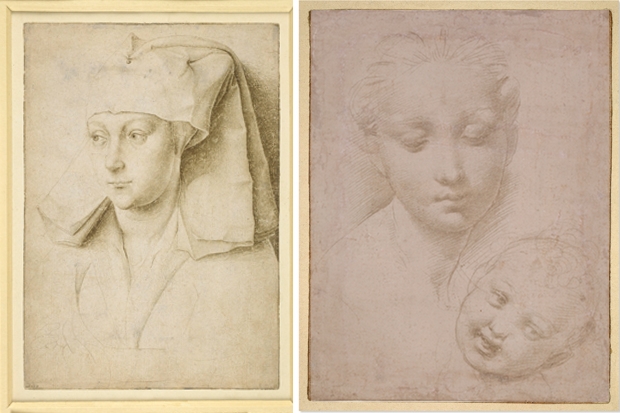Marshall McLuhan got it at least half right. The medium may not always be the entire message, but it certainly dictates the kind of message that can be transmitted. This is one lesson of Drawing in Silver and Gold: Leonardo to Jasper Johns, an exhibition at the British Museum that is packed with subtle masterpieces, and as a bonus contains — for those who like such things — two of art’s great studies of dogs.
I might as well start with those: one by Albrecht Dürer from around 1520, ‘Dog resting’, and the other by the later Dutch artist Hendrick Goltzius of his own pet, curled up and sleeping in about 1597. Both of these display the virtues of silverpoint. It is a medium that is marvellously well adapted to depicting the surfaces of things — such as the hairs of a canine coat, or the shine of a doggy nose.
It was also a good sketching medium, you could take your little book of prepared paper with you, the metal stylus tucked into the cover. When you saw something worth drawing — such as your own Partridge Dog snoozing rather charmingly or, as Goltzius did on another occasion, one of the relatively newly introduced tobacco plants growing — you could whip out your sketchbook and jot it down with no need to worry about dipping your quill in a pot of ink or sharpening your sticks of chalk.
Thus, and in other ways, silverpoint probably contributed to a revolution in art: the sudden, extraordinary development of visual naturalism in the 15th century. It was a convenient and beautiful way of recording the finest nuances in the way things looked. You can see that done to perfection in a drawing such as the ‘Portrait of a Papal Legate’ (c.1461)








Comments
Join the debate for just £1 a month
Be part of the conversation with other Spectator readers by getting your first three months for £3.
UNLOCK ACCESS Just £1 a monthAlready a subscriber? Log in